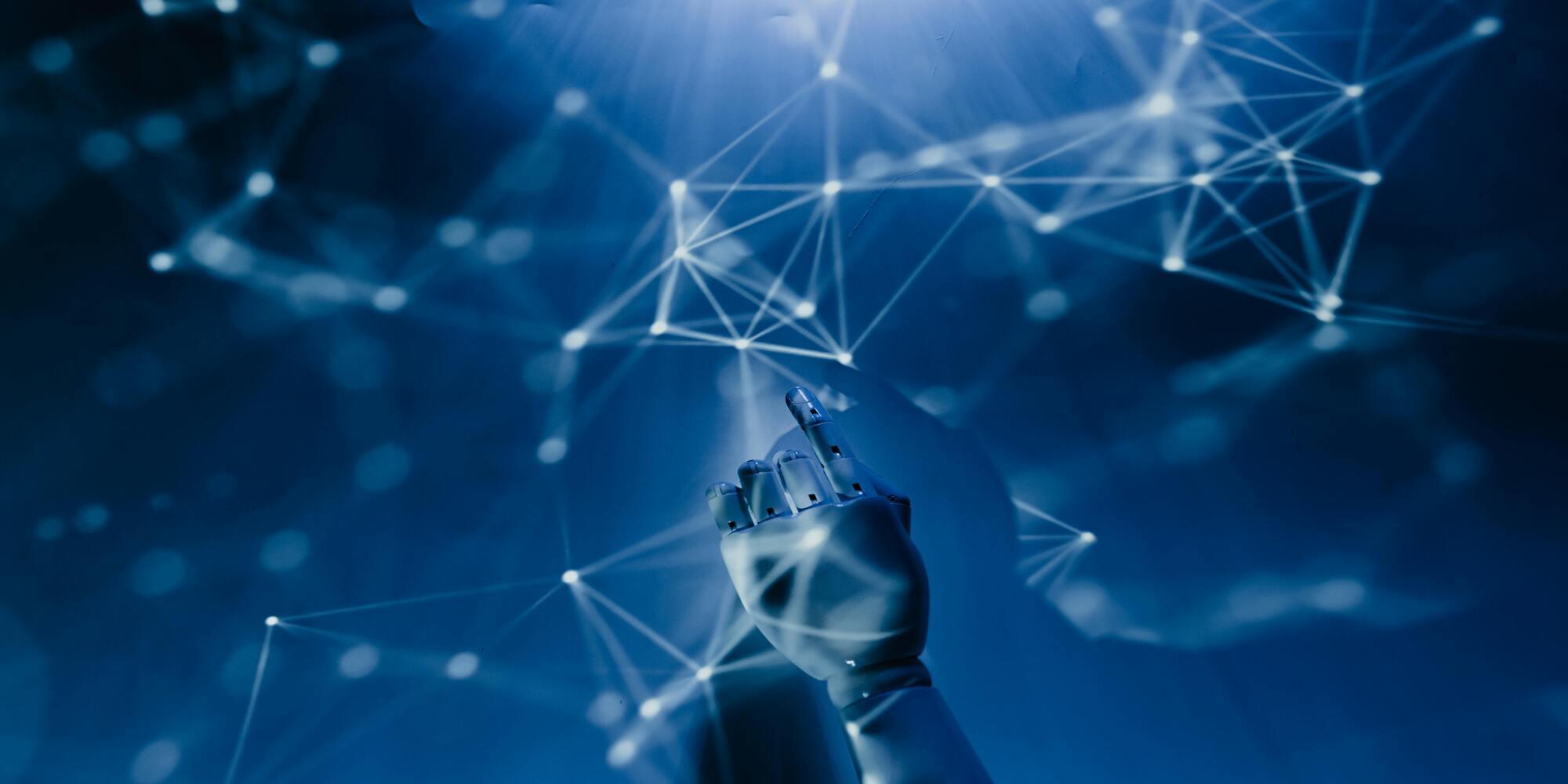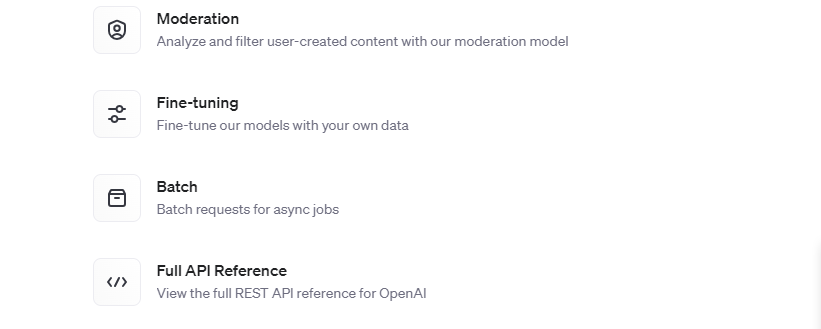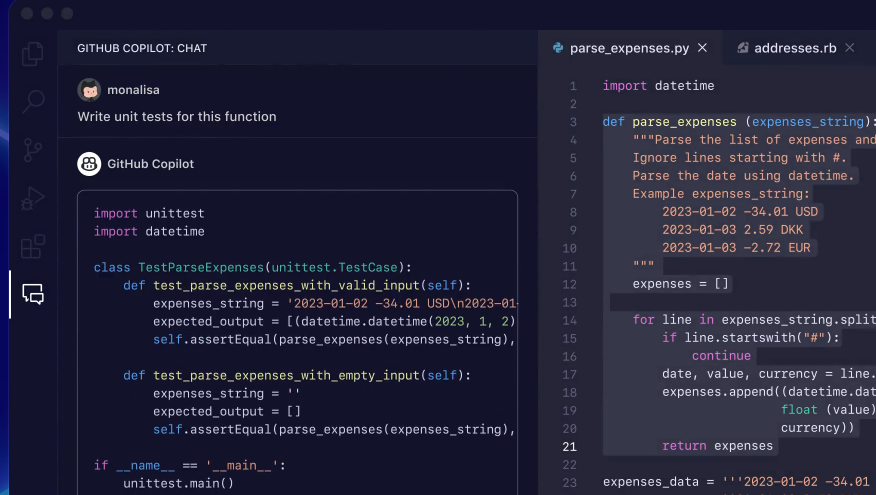
In a world where technology is changing fast, Artificial Intelligence is the transformative force across sectors. But what makes AI so important for programmers to learn today?
The rapid advancement in AI sets new benchmarks, not only in how we develop software but also in the very nature of what software can achieve. According to a Github survey, more than 92% of developers have now begun using AI coding in their workflows. But what’s happening here isn’t solely about the automation of routine tasks; in reality, it is enhancing cognitive capabilities to create systems that learn from experiences, adapt, and interact in ways previously thought to be solely the realm of human intelligence.
For developers, it is not just desirable but decisive to keep up with these trends to stay ahead in the competitive job market. Whether it’s the increase in demand for AI skills in job postings or the rising reliance on AI-driven development tools, the writing on the wall is clear: AI is reshaping the face of programming.
How Does AI Help Programmers?
AI is making a big difference in the lives of programmers, adding many tools and capabilities to the development process for improving productivity and creativity. Here’s how AI is making a difference:
- Routine tasks automated: AI handles repetitive coding tasks, automating them to free up a programmer’s time to focus on intricate, complex problems that require human insight.
- Error detection: next-generation AI tools can sweep through code faster and more accurately than any person. They detect errors and suggest ways to fix them before deployment, ensuring quality and reducing the time spent on debugging.
- AI-enhanced efficiency in code: AI optimizes existing code and suggests refinements that improve its speed and reduce the consumption of resources.
- Predictive analytics: AI uses past data to predict future outcomes. This helps programmers gain insight into potential system failures, user behavior, and more, allowing them to take action in advance.
- Personalized code suggestions: AI-driven programming assistants suggest code based on the programmer’s past coding style, thereby increasing efficiency.
- Learning and development: AI-powered platforms provide personalized learning by recommending resources and tutorials that match a programmer’s skill level and pace.
- Language processing: AI can understand and process human languages, allowing programmers to communicate with their tools more intuitively and effectively.
With these advancements, it’s clear that businesses aiming to stay competitive in AI innovation are looking to hire remote developers to build advanced AI solutions, further enhancing their capacity to create efficient, cutting-edge software.
Are Programmers in Danger from AI?
AI is not a threat; it is a tool that can help lead humanity down the most resourceful and progressive path in programming. AI technology can reinforce the security of programmers‘ roles as irreplaceable architects of advanced, intelligent systems. Instead of fearing AI, programmers should consider it an important skill that will be indispensable in their repertoire for the future.
Complementary Roles
Rather than replacing them, AI is more likely to augment a programmer’s capabilities. AI can automate mundane activities, freeing programmers to focus on strategic and creative components.
Skill Demand Shifts
According to a report from the World Economic Forum, AI will create more jobs than it displaces. Programmers who adapt and learn to leverage AI in workflows will be in high demand, as old tasks become automated while new ones emerge.
New Opportunities
As artificial intelligence evolves, new job roles and industries that require human supervision will emerge. With evolving views on the ethics of AI, the need for monitoring systems, and the increasing demand for personalized user experiences, skilled programmers will continue to be essential in the sector.
Enhancing Productivity
AI-powered tools are designed to enhance productivity, not eliminate jobs. These tools assist in error detection, optimization suggestions, and complex data analysis management at unprecedented speeds—enhancing the output of human programmers.
Top 10 AI Trends Programmers Can’t Ignore
Below are the top AI trends that are transforming not only the industry but are must-knows for every programmer who wants to stay ahead of the curve.
- Improvements in generative AI.
- AI-powered development tools.
- The rise of AI in cybersecurity.
- Integration of Artificial Intelligence with IoT.
- Push for ethical AI and regulation.
- AI-enhanced cloud computing services.
- The role of AI in predictive analytics.
- Deep learning, neural networks, and their widespread adoption.
- The impact of AI on Big Data processing.
- Reinforcement learning in real-world use cases.
Improvements in Generative AI
Generative AI is quickly becoming an essential tool for any serious programmer. By learning from large datasets, it can be applied to create new content, whether it’s source code or digital images, using machine learning. The development of generative AI is definitely a change agent; it enables the creation of boilerplate code and solutions to complex problems that are far more innovative and much faster.
Recently, advancements in generative AI, such as OpenAI’s Codex, provide significant support to programmers by suggesting code snippets and, in some cases, even writing entire functions based on minimal input. This not only saves time in the coding process but also reduces errors, allowing developers to focus on strategic and creative tasks. In effect, this has a critical impact on programmer productivity, enabling them to accomplish in minutes what used to take several hours.

source: openai.com
Furthermore, generative AI empowers software applications to interact with users in highly personalized ways, delivering smarter application behaviors. Now, with even more fine-tuned AI models, it becomes possible to anticipate user needs and dynamically adjust interfaces.
AI-Powered Development Tools
AI-powered development tools are transforming how programmers work, making code output faster, more accurate, and less labor-intensive. These tools apply AI to automate complex coding tasks, identify errors, and provide real-time suggestions for better coding, significantly increasing developer productivity.
For instance, AI-powered code completers like GitHub Copilot can suggest code snippets as the developer types, based on the context of the code. This accelerates the coding process and helps programmers learn new coding practices and libraries. The impact is clear: AI handles routine coding tasks, freeing developers to focus on creative aspects of the development process.

source: Github Copilot
In addition, AI helps improve code quality by using tools for in-depth analysis that can detect bugs before code implementation. Many of these tools scan vast pools of historical data to identify patterns and anomalies that could indicate potential issues. By detecting errors early, developers can avoid costly fixes later in the development cycle.
The Rise of AI in Cybersecurity
AI is rapidly becoming a critical component in cybersecurity, revolutionizing how advanced organizations defend against evolving cyber threats. AI-driven cyber defense systems can detect anomalies and potential threats with speeds and accuracy unmatched by humans when analyzing vast amounts of data.
AI security systems process massive datasets to identify patterns that signal possible security breaches or attacks. This enables real-time threat detection and immediate response, significantly reducing the time window for attackers. For example, an AI system can identify phishing attacks or unusual traffic patterns to monitor network activity.
More importantly, AI enhances predictive capabilities, helping to guard against future cyber threats based on historical data. This proactive approach to cybersecurity ensures the protection of sensitive information and the integrity of systems, safeguarding the continuity of business operations. Programmers working in AI for cybersecurity focus on developing algorithms that learn and adapt faster than traditional software updates.
Integration of Artificial Intelligence with IoT
Artificial Intelligence integrated with the Internet of Things is changing the way devices work and interact with each other, opening a completely new frontier of research for programmers in smart technology. This integration allows IoT gadgets to collect data, analyze it, and make real-time decisions, thereby enhancing functionality and efficiency.
AI enhances IoT systems with the capability to run smarter decision-making processes. For example, AI algorithms can predict maintenance needs for industrial equipment to minimize downtime and extend the life of machinery. This is crucial in industries like manufacturing, where equipment failure can cause significant losses in production.
AI-driven IoT applications also play a core role in energy management by optimizing energy use in smart homes and buildings, reducing costs, and minimizing environmental impact. These systems learn from daily usage patterns and can adjust heating, lighting, and other utilities for maximum efficiency.
Security is another area where AI has greatly increased the potential of IoT. Specifically, AI algorithms detect and respond to security threats in real-time, making smart homes and cities much safer. For programmers, this trend means developing secure, AI-enabled code that protects data and privacy in an always-connected world.
Push for Ethical AI and Regulation
Momentum is increasing toward ethical AI and tighter regulation, emerging as a critical concern for programmers worldwide. The rise of AI technologies has made it necessary to establish clear guidelines that ensure these systems operate responsibly and ethically.
Recent statistics indicate that 52% of Americans are concerned about AI’s impact, leading to calls for more robust frameworks. Several countries have already begun implementing AI governance frameworks that address issues such as privacy, bias, and accountability. For programmers, this marks a significant step toward developing AI with ethical considerations at the forefront.
Now, they must incorporate ethical considerations directly into the development process, prominently through auditing open and transparent algorithms. In other words, decisions made by AI should be explainable and justifiable. Moreover, data handling practices are under closer scrutiny to ensure user privacy and the absence of bias. Developers must therefore be more diligent in their data management and analysis practices.
Additionally, the use of AI in sensitive areas such as facial recognition and surveillance raises concerns about civil liberties, making compliance with ethical standards not only advisable but imperative. The ethical AI movement is reshaping programmers‘ roles and responsibilities, requiring them to align with legal and societal expectations while managing AI’s potential.
AI-Enhanced Cloud Computing Services
Among the most important trends programmers can no longer afford to ignore is how AI is transforming the way developers work through its integration with cloud computing. AI-enhanced cloud services not only increase efficiency but are also fundamentally changing the capabilities of cloud platforms.
For instance, AI algorithms are being applied to data management, resource optimization, and even enhancing security protocols. In simple terms, AI in cloud services allows for predictive analysis, identifying potential problems before they occur to ensure better uptime and stability.
Statistics show a steep growth in the adoption of AI capabilities within cloud platforms. For example, one survey indicates that more than 60 percent of new applications currently under development will, within the next two years, incorporate AI-enhanced cloud computing services for at least some of their functionality. This trend puts pressure on programmers to learn and integrate AI technologies into their cloud-based projects to remain competitive and meet the rapidly growing demand for sophisticated, scalable, and secure applications.
Cloud providers are also rolling out new AI tools and features for tasks ranging from training machine learning models to real-time analytics in complex processes. These tools equip programmers with powerful resources without requiring extensive manual setup, thereby increasing productivity and allowing developers to focus on creativity and innovation in application development.
The Role of Artificial Intelligence in Predictive Analytics
AI is transforming the field of predictive analytics and equipping developers with new and powerful tools to report future trends and behaviors. Companies in finance, healthcare, retail, and more can benefit significantly from this, where accurate predictions ensure a competitive advantage.
In the past, this wasn’t the case. Predictive analytics powered by AI now allows programmers to build models where large data sets can be studied, and results predicted accurately. For instance, AI is used to predict market changes within the financial sector. It can also be applied similarly in projecting health outcomes for patients based on historical data. Such models are not only fast but also reliable because of AI’s ability to learn from data patterns over time.
Recent statistics show that over 75% of businesses investing in AI will be using predictive analytics by 2025. This trend highlights that most businesses increasingly depend on AI for decisions that were previously based on human intuition or relatively slower, more traditional methods of data analysis.
Predictive analytics is also integrating AI into programming decision processes, automating what have so far been largely manual, labor-intensive, and time-consuming data-to-decision processes. These processes are often error-prone and costly, particularly in high-stakes environments.
Deep Learning, Neural Networks, and their Widespread Adoption
A significant influx has occurred in deep learning and neural networks—technologies that programmers simply cannot overlook. These technologies are at the forefront of promoting artificial intelligence improvements and innovations that would have been considered science fiction just a decade ago. Deep learning models have enabled significant advancements in image and speech recognition, natural language processing, and more by mimicking the human brain’s learning capability from large data sets.
The expansion of neural networks forces programmers to step up to more complex algorithms, requiring a full understanding of both the theory and practical applications of these models. Industries like automotive, healthcare, and entertainment are already benefiting from deep learning through systems responsible for autonomous driving, medical diagnosis, and personalized content recommendations, among others.
Statistics show that the use of deep learning in enterprise applications is expected to increase by over 40% annually, pointing to a growing demand for skills in this area. Programmers who excel in neural networks and deep learning are finding their skills in high demand as many organizations continue to innovate in creating AI solutions that learn and adapt over time.
The Impact of Artificial Intelligence on Big Data Processing
AI is revolutionizing big data management, presenting new tools and methodologies that programmers can adapt to handle large datasets more professionally. Analysis is now conducted much more quickly than before, enhancing the efficiency and quality of the insights produced.
For programmers, working with AI involves interacting with tools that clean, sort, and analyze large volumes of data automatically and at tremendous speeds. Other AI-driven tools, such as machine learning models, identify patterns and anomalies without human involvement, enabling real-time processing—crucial for industries like financial services, healthcare, and retail.
Statistics show that businesses using AI to analyze big data report a 30% increase in processing speed. This shift has transformed data science, placing top-market value on programming related to AI and machine learning.
Moreover, AI’s ability to process and interpret enormous data sets provides greater possibilities for innovation. Programmers working on creating complex predictive models that customize customer experiences are in high demand as the need for AI and data processing skills continues to rise.
Reinforcement Learning in the Real World
Reinforcement learning is gaining significant importance in real-world applications, so programmers should take heed. Unlike traditional supervised learning, in reinforcement learning, algorithms are trained to learn the correct series of actions through trial and error, adapting to the results of actions in a changing environment. This makes RL very powerful for tasks where the optimal solution isn’t known beforehand.
Reinforcement learning has numerous real-world applications, ranging from robotics and finance to gaming. For instance, DeepMind, founded by Demis Hassabis in 2014, demonstrated the power of reinforcement learning in developing superhuman AI for complex games like Go and StarCraft. RL algorithms are also widely applied in financial markets to learn and adapt to market conditions.
One important statistic is that the global market for reinforcement learning is expected to grow by nearly 20% annually over the next five years. For developers, learning RL opens the door to working on more innovative projects that push the boundaries of what AI can achieve.
Reinforcement learning not only enhances programming capabilities but also keeps developers ahead of the curve in a world rapidly digitizing into AI. As more industries adopt RL, it becomes increasingly important for programmers to have a current understanding of its principles and applications.
Final Thoughts
The 10 AI trends we’ve discussed aren’t just influencing programming—they’re changing the game entirely. From generative AI to AI’s role in IoT, these developments are giving programmers tools to boost productivity, spark creativity, and drive innovation. As AI influences areas such as cybersecurity and big data, programmers who keep up with these trends will stay ahead and help create the next wave of smart applications. Embrace these changes, and you’ll be prepared for what’s coming next.


 info@cultbooking.com
info@cultbooking.com  0049 30 726225 0
0049 30 726225 0 